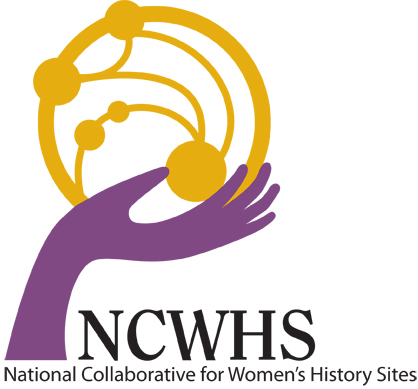This article comes from NCWHS vice-president Lori Osborne (@EHC_Archivist), Archivist at the Evanston History Center, located in the Charles Gates Dawes House, a National Historic Landmark. The Evanston History Center and Lori were recently recognized by the Illinois Association of Museums for Where Are We? Mapping Our Way Through Evanston History, an exhibit of historic maps that Lori curated. Lori also directs The Evanston Women’s History Project, a “collaborative community effort to document and celebrate the significant contributions of Evanston women and women’s organizations to the community.”
 Here at NCWHS we are always saying that women’s history is everywhere. This past week I discovered just how true this really is.
Here at NCWHS we are always saying that women’s history is everywhere. This past week I discovered just how true this really is.
As part of a group of 90 adults and teenagers from my local Presbyterian Church, I participated in an Appalachian Service Project trip where we worked on people’s homes in the rural mountains of Eastern Kentucky. We were located near the small community of Hazard, Kentucky, and our home base for the week was Lotts Creek Community School. The building we stayed in is a new, modern K-12 facility built in 1998. It functions as a community center as well as a school, and is a beehive of activity. During our week Vacation Bible School was held there every night and the school’s high school boys basketball team were there practicing 24/7. We were gone much of the day with our work projects, so did not see the high level of activity that we could tell went on there while we were gone.
I started to get interested in the school’s history when I saw, as I arrived, the historical marker placed near the original buildings up the hill from the new school. We showered in and got supplies from two of these buildings, the old school and gym, and I could tell that these were interesting though run-down structures. My interest continued when I saw all the framed old photographs of students, teachers, sports teams and prom queens lining every bit of open wall space inside the new school. There were also brochures about the school everywhere, but in the midst of a busy week of constant activity, I did not pick one up at first.
Every evening there is some kind of programming planned and on Tuesday night the director of the school joined us to tell us something about the school and its history. She began with the story of her aunt, the school’s founder, who still functions as source of inspiration for the school. Her name was  Alice Slone. She grew up in the hills near the school and at age fifteen was encouraged by her teacher, Alice Lloyd (shown at left), to seek out further education up north. She made her way to Cleveland, Ohio, where she met and lived with Ann Anthony Bacon, niece of Susan B. Anthony. She attended Ohio State and graduated with a BS in education in 1932. She then returned to the mountains and taught for a year in her old school.
Alice Slone. She grew up in the hills near the school and at age fifteen was encouraged by her teacher, Alice Lloyd (shown at left), to seek out further education up north. She made her way to Cleveland, Ohio, where she met and lived with Ann Anthony Bacon, niece of Susan B. Anthony. She attended Ohio State and graduated with a BS in education in 1932. She then returned to the mountains and taught for a year in her old school.
In 1933, she decided to found a new school in Lotts Creek (shown above). This new school was part of a network of “Settlement Schools” in the Appalachian region following many of the same principals of the Settlement House movement. It was a residence for staff, teachers and students. It was a community center, providing broader services for local residents. And, it was a school. Slone visited Hull House in Chicago and met with Jane Addams to get inspiration and resources. She tapped into her connections up north for funding and support. And she sought input from residents to make the school a true community based organization.
In 1952 Slone got funding to build the three story classroom building that still stands up the hill. In 1967, the gymnasium was built to house the strong basketball program the school had built. When Alice Slone died her niece, Alice Whitaker, took over from her and it was through her efforts that the new school, funded entirely by private donations, was built in 1998.
Today, Lotts Creek Community School is the only fully functioning settlement school that remains. It now works as a private/public partnership, with some funding from the local government for the school. Its programs also include the housing repair program that I participated in, a Medical Assistance Program, and a Food Pantry. It supports arts and music programming for the students, and an after school enrichment program. And it offers every graduate scholarship assistance to attend college.
This school is still inspired by its history. It is proud of the generations of women who have made it all possible. It was a surprise for me to discover its story, deep in the Kentucky mountains. But it has inspired me as well.
More information can be found at these web sites —
Kentucky Educational Television — http://www.ket.org/settlement/index.html
Settlement Schools on Wikipedia — http://en.wikipedia.org/wiki/Settlement_school
Lotts Creek Community School – http://www.lottscreek.org/
